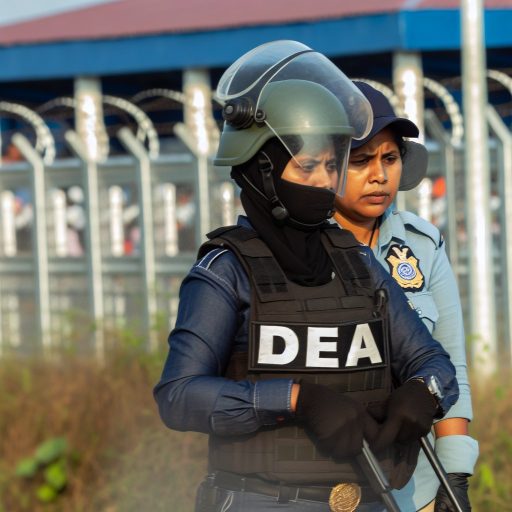Introduction
Wildland firefighting is a high-risk job that requires a well-organized management system.
The Incident Command System (ICS) plays a crucial role in coordinating efforts during these emergencies.
Importance of the Incident Command System
In wildland firefighting, having a structured ICS is vital for efficient communication, resource allocation, and overall incident management.
It ensures that all responders are on the same page and working towards a common goal.
Definition of the Incident Command System
The Incident Command System is a standardized management approach used to organize and manage response activities at an incident.
It provides a hierarchical structure, clear roles and responsibilities, and a systematic approach to handling emergencies.
Origin and Development of the Incident Command System
The Incident Command System (ICS) has a long history, especially in the realm of wildland firefighting.
It originated from the need to have a structured and organized approach to managing emergency incidents in the field.
The development of ICS can be traced back to the 1970s, when wildfires were becoming more frequent and complex.
Major Events that Led to the Implementation of the System
- South Canyon Fire: In 1994, a tragic wildfire in Colorado, known as the South Canyon Fire, claimed the lives of 14 firefighters.
- Thirtymile Fire: Another incident that underscored the necessity of a standardized incident management system was the Thirtymile Fire in Washington in 2001, where four firefighters lost their lives due to lack of proper communication and coordination.
- California Wildfires: The devastating wildfires that ravaged California in recent years further emphasized the importance of having a robust and effective incident command system in place to handle such large-scale disasters.
Structure of the Incident Command System
Explanation of the five major components of the system.
Roles and responsibilities of each position within the system.
Five Major Components of the Incident Command System
Incident Commander (IC): The IC is responsible for overall management of the incident, making strategic decisions.
Operations Section: This section is responsible for tactical response, direct firefighting operations on the ground.
Planning Section: The Planning Section is responsible for collecting and evaluating information to assist decision making.
Logistics Section: Logistics is responsible for providing resources, personnel, and support to the incident.
Finance/Administration Section: This section manages financial aspects, keeps track of costs, and handles administrative tasks.
Roles and Responsibilities of Each Position
Incident Commander (IC)
The Incident Commander has the ultimate responsibility for managing the entire incident and ensuring that objectives are met.
Operations Section
The Operations Section is responsible for developing and implementing the incident action plan, directing all tactical operations.
Planning Section
The Planning Section is responsible for collecting and evaluating information, creating plans, and maintaining documentation.
Logistics Section
The Logistics Section is responsible for providing resources, personnel, facilities, equipment, and supplies to support the incident.
Transform Your Career Today
Unlock a personalized career strategy that drives real results. Get tailored advice and a roadmap designed just for you.
Start NowFinance/Administration Section
The Finance/Administration Section manages financial aspects, procurement, compensation, and documentation related to the incident.
The Incident Command System provides a clear structure for managing incidents effectively and efficiently.
Delve into the Subject: How to Become a U.S. Marshal: Step-by-Step Guide
Step-by-Step Implementation of the Incident Command System
During a wildland firefighting incident, the Incident Command System (ICS) is crucial in ensuring a coordinated and effective response.
- Initial Assessment: The incident commander assesses the situation, establishes incident objectives, and identifies resources needed.
- Organization: The ICS is structured with clear roles and responsibilities, including command staff, operations, planning, logistics, and finance.
- Unified Command: Multiple agencies may be involved, so a unified command structure is established for decision-making.
- Resource Management: Resources such as personnel, equipment, and supplies are allocated based on priority and need.
- Planning: A comprehensive action plan is developed, including strategies, tactics, and objectives to achieve containment.
- Communication: Effective communication is key, with clear channels established for sharing information and updates.
- Operational Periods: The incident is broken down into operational periods to manage work shifts, resources, and progress.
- Assessment and Adjustments: Regular assessments are conducted to evaluate progress and make necessary adjustments to the plan.
Communication Strategies within the System
Communication is essential in the ICS to ensure all responders are informed and coordinated.
- Common Terminology: Use of standardized terminology ensures clear and consistent communication across all levels.
- Chain of Command: Communication follows a hierarchical chain of command, with information flowing up and down as needed.
- Briefings: Regular briefings are conducted to update all personnel on the current situation, objectives, and assignments.
- Radio Protocols: Standard radio procedures are established to ensure efficient and effective communication during operations.
- Check-Ins: Regular check-ins with personnel and resources help monitor progress and address any issues or concerns.
- Information Sharing: Timely sharing of information and updates is critical for decision-making and situational awareness.
Find Out More: Work Environment of Parole Officers
Benefits of the Incident Command System
Implementing an effective Incident Command System (ICS) in wildland firefighting operations offers numerous benefits. All of these contribute to the overall efficiency and effectiveness of response efforts.
Here are some key advantages:
- Improved coordination and organization of resources during a wildfire.
- Enhanced safety measures for firefighters and other personnel.
One of the primary benefits of the Incident Command System is its ability to streamline and enhance the coordination and organization of resources during a wildfire incident.
By establishing a clear chain of command, assigning specific roles and responsibilities to team members, and implementing standardized operating procedures, the ICS ensures that all available resources are utilized effectively and efficiently to combat the fire.
With the ICS in place, firefighting agencies can avoid confusion, duplication of efforts, and resource wastage. This ensures that everyone is on the same page and working towards a common goal.
This coordinated approach helps maximize the impact of available resources. It leads to a more effective response to the wildfire.
Another significant benefit of the Incident Command System is the emphasis it places on safety measures for firefighters and other personnel involved in wildland firefighting operations.
The ICS framework includes protocols and guidelines for ensuring the safety and well-being of all individuals on the fireground, including firefighters and support staff.
By establishing safety zones, escape routes, and communication protocols, the ICS helps minimize the risks associated with fighting wildfires. It ensures that responders are well-equipped to handle any unforeseen emergencies or situations that may arise.
This proactive approach to safety contributes to the overall effectiveness of the response effort. It reduces the likelihood of injuries or casualties among firefighting personnel.
The Incident Command System offers a range of benefits. These are crucial for successful wildland firefighting operations.
From improved coordination and organization of resources to enhanced safety measures for firefighters and other personnel, the ICS plays a vital role in ensuring a swift and effective response to wildfires.
By implementing and following the principles of the ICS, firefighting agencies can better manage complex fire incidents. This helps to protect both lives and property.
Showcase Your Business Today
Reach thousands of readers actively exploring professional services. Publish your business profile and grow your audience now.
Publish NowDiscover More: Correctional Officer Interview Tips

Implementing the Incident Command System in Wildland Firefighting
Implementing the Incident Command System in a wildland firefighting scenario poses several challenges.
These challenges can hinder effective emergency response.
Understanding these obstacles and employing strategies to overcome them is crucial for a successful operation.
Common Obstacles Faced When Implementing ICS:
- Communication Issues: In the chaos of a wildfire, maintaining clear and effective communication among team members can be challenging.
- Limited Resources: Wildfires often occur in remote areas with limited access to resources like water, equipment, and personnel.
- Changing Conditions: Wildfires are dynamic and unpredictable, with conditions changing rapidly.
- Interagency Cooperation: Wildland firefighting operations often involve multiple agencies and organizations.
- Topography Challenges: The terrain in wildland firefighting areas can be rugged and inaccessible.
Strategies for Overcoming These Challenges:
- Training and Preparedness: Providing comprehensive training on ICS protocols improves efficiency.
- Establishing Clear Command Structure: Defining roles and responsibilities ensures smooth communication.
- Utilizing Technology: Leveraging advanced communication technologies enhances coordination.
- Mutual Aid Agreements: Developing agreements fosters collaboration during emergencies.
- Adaptability and Flexibility: Teams should anticipate changes and adjust ICS strategies accordingly.
- Incident Debriefing: Conducting post-incident debriefings enhances future implementations.
- Community Engagement: Involving local communities fosters cooperation and shared responsibility.
- Continuous Training and Education: Ongoing training ensures personnel remain updated on ICS protocols.
Implementing the Incident Command System in wildland firefighting operations comes with challenges.
With proactive strategies and a focus on preparedness, these obstacles can be overcome.
By addressing communication issues, resource limitations, changing conditions, interagency cooperation, and topography challenges, firefighting teams enhance their response capabilities.
Investing in training, clear command structures, technology, mutual aid agreements, adaptability, debriefing, community engagement, and continuous education is essential.
Prioritizing these strategies enables agencies to improve emergency response effectiveness.
This helps protect communities and ecosystems from the devastating impact of wildfires.
Learn More: Inspiring Stories from Veteran Park Rangers
Importance of the Incident Command System in Wildland Firefighting
The Incident Command System is crucial for managing wildland firefighting operations effectively.
This system streamlines communication and ensures accountability.
Moreover, it enhances overall coordination among firefighting personnel.
Implementing this system enables firefighting agencies to respond to wildfires more efficiently.
It also helps keep firefighters safe during operations.
The Incident Command System is a proven and valuable tool for wildland firefighting.
Firefighters should engage in workshops and drills for further education and training on the system.
Continuous learning and improvement with the Incident Command System will lead to better outcomes.
Let us strive to enhance our knowledge and skills in utilizing this system to protect lives, property, and the environment.
Additional Resources
National Interagency Fire Center: Welcome to the Nation’s Logistical …
New York Wildfire and Incident Management Academy
[E-Books for Sale]
The Big Book of 500 High-Paying Jobs in America: Unlock Your Earning Potential
$19.99 • 500 High-Paying Jobs • 330 pages
Explore 500 high-paying jobs in America and learn how to boost your career, earn more, and achieve success!
See All 500 High-Paying Jobs of this E-Book
1001 Professions Without a Degree: High-Paying American Jobs You Can Start Now
$19.99 • 1001 Professions Without a Degree • 174 pages
Discover 1001 high-paying jobs without a degree! Unlock career tips, skills, and success strategies for just $19.99!




